This article was created in June 2019, updated in March 2020.
Using social media to promote your products or services into the world can be an amazing opportunity. It’s free and gives you the chance to connect with pretty much billions of people around the globe. Wow! Right? So powerful.
But it can also be a curse.
Because there are so many social media platforms, and there is so much to do, most entrepreneurs and business owners see their social media as a heavy lifting chore or necessary evil and end up spending more time trying to learn social media marketing than marketing their business.
The constant “getting ready to get ready” turns into marketing fatigue. That’s the danger zone. This brings them to do zero marketing and have zero clients. They get into desperation mode and sign up for 50 meetups a month. The fatigue is now even worse.
Are you in the danger zone or getting closer?
I’ve constructed this guide to help entrepreneurs and small business owners without unlimited marketing budgets understand the erratic world of social media.
This ultimate guide gives you my favorite social media marketing tools that you can use to boost your social media without breaking your bank account.
I’m here to simplify your game by telling you exactly which tools I use as a small business owner and strategist with over 10 years in digital marketing.
I’m dividing the amazing tools into the 4 job categories that a social media specialist performs. I chose the specialist role because it’s the most comprehensive one. I will cover “the what” which is the strategy and “the how” which are the tools.
Chapter 1: Social Media Skills and Job Description
What does a Social Media Specialist do?
You Think You Can Be A Great Social Media Specialist?
Chapter 2: Communications
What is a Marketing Communications Strategy?
A Great Communications Marketing Strategy Helps You Attract Ideal Clients
Best Tools To Have An Amazing Communications Marketing On Social Media
Chapter 3: Visuals
A Simple Rule To Create Amazing Visuals For Your Brand
Match Your Local Market’s Expectations
Chapter 4: Social Channels Distribution
Best Posts To Share (Profitable Social Media Content)
My Go-To Social Media Scheduling Tools
The Format I Use To Plan My Social Media Marketing Every Month
Social Media Planner For Content Creators
Chapter 5: Metrics
What’s The Difference Between Google Analytics and Google Search Console?
Let’s catapult this complex world of social media marketing to take you out of the danger zone!
Chapter 1: Social Media Skills and Job Description
Social Media Marketing, What Exactly Is?
Social media marketing is a degree on its own.
In fact, if you were looking for a social media job, you will find all these different names:
Director, Social Marketing and Brand Communications, Social Media, Social Media Relations, Coordinator, Engagement Manager, Internet Marketing Coordinator, Social Media Account Executive, Social Media Analyst, Social Media Editor, Executive, Coordinator, Producer, Social Media Specialist … and Strategist.
Did the list confuse you even more? No worries. Chances are that you’re a social media specialist or a small business owner trying to learn how to market yourself. Regardless, you have to run most of the listed roles on your own, at least at the moment.
A Brief Job Description of a Social Media Specialist
Before we discuss the tools, let’s first cover the fundamentals of what the scope of a social media specialist looks like. This will help you, as a business owner, to understand the kind of skills you need and the time you need to set aside to make this work.
Here is a job brief of a Social Media Specialist from Workable.com.
We are looking for a driven Social Media Specialist to attract and interact with targeted virtual communities and networks users.
What does a Social Media Specialist do?
The goal is to gradually achieve superior customer engagement and intimacy, website traffic and revenue by strategically exploiting all aspects of the social media marketing roadmap.
Social media specialists should have a solid understanding of how each social media channel works and how to optimize content so that it is engaging on those channels. You are responsible for joining relevant conversations on behalf of the brand and “soft selling” the product by providing support to current and prospective customers.
Responsibilities
- Build and execute social media strategy through competitive research, platform determination, benchmarking, messaging and audience identification
- Generate, edit, publish and share daily content (original text, images, video or HTML) that builds meaningful connections and encourages community members to take action
- Set up and optimize company pages within each platform to increase the visibility of company’s social content
- Moderate all user-generated content in line with the moderation policy for each community
- Create editorial calendars and syndication schedules
- Continuously improve by capturing and analyzing the appropriate social data/metrics, insights and best practices, and then acting on the information
- Collaborate with other departments (customer relations, sales etc) to manage reputation, identify key players and coordinate actions
Requirements
- Proven working experience in social media marketing or as a digital media specialist
- Excellent consulting, writing, editing (photo/video/text), presentation and communication skills
- Demonstrable social networking experience and social analytics tools knowledge
- Adequate knowledge of web design, web development, CRO and SEO
- Knowledge of online marketing and good understanding of major marketing channels
- Positive attitude, detail and customer oriented with good multitasking and organisational ability
- Fluency in English
- BS in Communications, Marketing, Business, New Media or Public Relations
You Think You Can Be A Great Social Media Specialist?
That’s exactly why you’re here!
Don’t get intimidated by the formal education the job description required. I happen to have a JD and a BBA, but, honestly, I didn’t learn any of the social media strategies from school. It was all from practice.
Social media marketing, thinking big picture, is about: communications, creative, technology, and analytical tasks. So let’s cover each task and the tools you need to become a great social media marketer.
Chapter 2: Communications
If you’re like most small business owners, you want to promote your business without breaking the bank.
And there is no better way to do that than by managing your own PR campaign internally without retaining the services of a media relations company or a full-service marketing company.
Wait! Do you mean PR as public relations? Free, like free lunch?
Exactly! If you take ownership of your own marketing communications strategy, you’ll learn how to build lasting relationships with your connections, including journalists and influencers, get free press, and acquire more customers through a sustainable organic approach.
Let me see your smile!
If you have no problem with having sales conversations with future clients, then, sharing your message on social media should not be a problem. You already know what to say so that’s a great step.
But what if you’re not that confident about what to say or how to say it?
No worries!
You’re here and that means you’re open to learning new skills. That’s a smart move. The last thing you want is burning your audience by sharing the wrong message and confusing them. A confused mind can’t make a decision.
What Is A Marketing Communications Strategy?
A Marketing communications strategy defines the entire range of activities you will do to market your products. It includes:
- Your message (what is to be said),
- The medium (where it is to be said), and
- The target (to whom your message is reaching)
If you’re marketing yourself, knowing what to say is, perhaps, one of your struggles.
The Golden Circle by Simon Sinek is my favorite go-to guide to create a powerful message.
Have you taken the time to reflect about your why? (Hint: It’s not to make money.)
Think about the core purpose of your business, and then think about how you market your products or services. Are they aligned? As Sinek has found, having loyal customers is all about attracting the people who share your fundamental beliefs. Remember: People don’t buy what you do. They buy why you do it.
Yes, this might seem obvious, but it’s a critical step that is often overlooked. If you were (or are) the founder of your business, wouldn’t you want the people marketing it to know why you started it in the first place? Understanding “why” is essential to knowing how to communicate the “how” and “what”.
Life Gets Easier When You Work With Clients That Share Your Values
Keep this in mind when you’re planning your content and your target audience. You don’t want to just work with anyone. You want ideal clients.
When I say ideal clients, I mean clients with a strong connection. How strong? Well I guess it depends on your culture and values. For me, mi casa es su casa. Clients come to my home office, know my family, and are invited to special events. I consider my clients like family. But that’s maybe part of my culture. I’m Puerto Rican and we are completely open to host people. We love spending time with people! You don’t have to copy my model. But you certainly want to connect with those who hire you or buy your products.
A Great Communications Marketing Strategy Helps You Attract Ideal Clients
If you take ownership of your own marketing communications strategy, not only you will be able to build stronger relationships with your network, but you will also have the opportunity to participate directly in conversations.
When your message reflects your values, the right people will feel attracted to you. That’s attraction marketing!
If you haven’t experienced the benefits of attraction marketing, go back and review your messaging.
- Are you sharing your why? Consistently?
- Does your message have the right voice?
- How about the vibe?
These factors are crucial when it comes to create a communications marketing strategy that let people say: “you’re talking to me”.
Best Tools To Have An Amazing Communications Marketing On Social Media (Spring 2020)
Communications Tool #1: Google Alerts
Monitor the web for interesting new content (including content about you). That’s right. You should set an alert to monitor your name and business name. Google Alerts is one of Google’s hidden gems. It’s a really powerful tool to keep track of trends, interesting topics, or anything really new that appears on the web. If you’re not using it already, here are a few creative ways to get started with it.
Google Alerts may not be one of Google’s most popular services, but it’s definitely one of the most useful.
Communications Tool #2: BuzzSumo
BuzzSumo is a research and monitoring tool you also want to have. The functionality is broken down as follows: Find content that is most shared on social media channels – you can enter your own domain or another domain, and see what has been shared socially. Find influencers related to particular topics.
Communications Tool #3: Content marketing planner.
What is Content Marketing?
Content marketing is a full strategy that tailors your communications to make people come to you rather than you reaching out to them.
According to the CMI, 72% of marketers say content marketing increases engagement and is a great lead generation tool. I’m certainly part of the stats.
Traditional sales methods assume that you’re exposing your product or service and the person is giving you 100% of their attention. As you know, in the digital-everything economy, that’s not the case. You’re lucky if someone gives you 60 seconds!
Even the best advertisers are having a hard time these days!
So what’s the solution? Avoid advertising? Let the consumer dictate the flow? Maybe! Of course not! That’s where content marketing comes in place.
Check out these stats from Hubspot
✔ Content marketing gets three times more leads than paid search advertising.
✔ 47% of buyers viewed 3-5 pieces of content before engaging with a sales rep.
✔ Marketers who prioritize blogging efforts are 13x more likely to see positive ROI.
Do You Need to Maintain a Blog to be Successful on Social Media?
✔ 66% of marketers surveyed used blogs in their social media content. (Social Media Examiner, 2019)
✔ 43% of B2B marketers say blogging is their most important type of content. (Social Marketing Industry Report, 2017)
Based on these interesting stats and my personal experience, the answer is yes. However, before getting into the blogging production, your brand needs, what I call, the core content marketing pieces so that you can activate attraction marketing and see results in less than 30 days.
I teach a method called The Ice Cream Cone to create a content marketing strategy.
You plan your core content marketing pieces thinking about the ice cream cone, as follows:
Top Funnel: think about the sprinkles of the ice cream. The more visually appealing is, the quicker you want it. This is very important because you want to activate emotions!
You want to create the I Want This Now factor!
Middle Funnel: they liked you! They are reading your content. Now it’s your duty to make them feel like they need to know what you know. Lead with your expertise, and give them what they want. However, you need to keep a balance between free tips and expert-level content. That’s why we have the bottom funnel.
Bottom Funnel: Here’s where you invite those who trust you already, to experience another level of working with you, period. No need to add flashy discounts. Those who are meant to receive your help, will be ready for you!
When you activate a great content marketing strategy and mix with a great social media marketing strategy, you will start experiencing word of mouth marketing. Your followers will turn into advocators and they will share your amazing content with their network. Those who came recommended will trust you even faster.
According to Nielsen, 92% of people trust recommendations from friends and family over any other type of advertising.
Curious about what people trust these days? Source: Nielsen.
If content writing isn’t your talent and you want to learn, find content marketing mentors and follow them on social media. My favorite is Julia McCoy. Her content marketing practices have amazing case studies, including her own agency. She built it from 0 to $4M in 7 years using just content marketing.
The key to create profitable content is easy (please write this down): give people what they want!
Be strategic with your communications and share what people want. This means:
- Stop sharing viral videos.
- Create a content marketing plan and structure your days.
- Listen to your audience. Find out the format your audience finds most valuable. If they tell you they love your videos, then, do more videos! If they tell you they love to read your long posts, then do more long posts.
Communications Tool #4: Grammarly
This is a great Chrome extension that will make your writing super easy. It gives you real-time spell check and ideas to communicate your message correctly.
Communications Tool #5: Headline Analyzer
Now that you know what to say, how to write it, it’s time to learn how to market it. Believe it or not, sometimes, you can get more engagement by having a compelling headline. Check this headline analyzer by the Advanced Marketing Institute.
Check for example the headline I tested for this article. I typically settle for a 41-50% since it’s considered a PRO headline. You might want to test your writing abilities and get back to me!
So, you will get all the ideas and will systematize them to only share the profitable ones, based on what your audience wants.
Communications Tool #6: SEM Rush.
For those of you who are more advanced, especially freelancers that want to implement SEO and social media strategies, SEM Rush is going to be your best tool ever!
What is SEMrush?
SEMrush is an all-in-one tool suite for improving online visibility. Our tools and reports the following digital marketing services:
- SEO
- PPC
- Keyword Research
- Competitive Analysis
- Social Media Marketing
- Public Relations
- Content Marketing
- Marketing Insights
- Business Management
Consider reading: 10 Amazing Tools We Use To Activate Your SEO
How to Keep Your Content Organized?
This is a great question! So let’s keep going with the list!
Communications Tool #7: Google Drive.
If you’re not familiar with this amazing -and free- service from Google, you just discovered a gem!
It’s your e-cabinet organizer. You should have a social media marketing folder and inside, different sub-folders and documents.
Open a content marketing folder. Inside this folder, create 2 separate documents: 1 for content ideas and 1 for content production.
This will be your bank or ideas and will turn eventually into your content factory!
Why Would You Consider Outsource Your Social Media?
A social media specialist will take care of your communications and content marketing (at least at my social media management company, we take care of that), so you can just sit down and have conversations with your targeted audience. That’s a big reason to even consider this solution, so you can focus on what matters the most.
Communications Tool #8: Trello Boards
For those of you who have a team, Trello Boards are great! For example, you can have a board per social media account and add tasks related to each.
Some of the tasks, for example, that you might have for LinkedIn tasks like: change the profile picture, connect with local professionals, and edit your BIO. Each task goes inside your LinkedIn board. You can always expand or delete as much as you need to.
So that’s it for communications. Now let’s talk about visuals!
Chapter 3: Visuals
When it comes to visuals, you might think that most entrepreneurs who are promoting themselves on social media, have this part very clear.
There is a lot of confusion, in particular, about branded content.
So let’s talk about “the what” first, and then discuss the amazing tools I have for you!
A Simple Rule to Create Amazing Visuals for Your Brand
8 out of 10 entrepreneurs I consult, use their social media channels as a billboard. All they do is talk about themselves, share promotions, and ask their audience to buy from them. This is wrong.
So, if you’re considering hiring me for your marketing team and all you have been doing on social media is talking about your product, that will be the first thing we will need to change.
To show you an example of what not to do on social media, take a look at this restaurant marketing.
Does it look pretty? Yes.
Does it call your attention? Maybe.
Would you return to their page if all you see is this content, daily? Maybe not!
If you want to discover how long your users are following your content from your Facebook Business Page, a great metric is Retention. If you dig into your analytics you will see this metric and will be able to understand what people want and what makes them coming back.
Click here to learn more about User Retention and Active Users Metrics. If it’s too complex, we can always have a conversation about this. Trust me, this part is essential, especially when you’re building your brand and your audience.
A simple rule that will help simplify your social media strategy: social media is not about YOU. What you are sharing in social media should always add value to your audience.
How Much Do Your Visuals Really Matter?
Shoppers can make snap judgments about a product in only 90 seconds, and 90% of them will base this perception purely on color.
PowerReviews Finds that 88% of Consumers Seek Visual Content Prior to Purchase
So, yes, your brand should be well represented by both, your content in writing and your content in visuals.
You might have heard about “branded content”. This is a concept that marketers can’t seem to agree.
Some entrepreneurs and marketers think that branded content is about adding a logo, phone number, and website to a picture and with that, they refer to their social media posts as “branded posts”. They see social media as an advertising channel, and all they care is about their ROI: leads and sales.
But guess what? Today’s consumer is way more educated.
“People don’t like being sold to. It’s a discomforting experience, so the challenge for content marketers is to make sure the entertainment value of the content outweighs the discomfort.” Mike Clear, Digitas
Branded content (also known as branded entertainment) is the practice of marketing via the creation of content that is funded or outright produced by an advertiser. Source: Wikipedia.
Perhaps you’re even more confused by this definition! I don’t blame you!
The Content Marketing Institute has argued passionately for the term to be dropped, insisting it gives content marketing a bad name.
Branded content gives agencies permission to keep talking about themselves, adding a bit of storytelling to product pitches. It should not be like that! This is actually what advertising is.
Now that we know what NOT to do with your visuals, let’s then discuss what kind of visuals should be part of your strategy.
Your visuals should have the power to ignite emotions and create a perception of the experience that the individual will have. Anything that interrupts the thinking process, will create friction (which is what you don’t want).
Think about your social media platforms as the store front. When people are in front of it, how do they feel?
- Do they feel inspired by your content?
- Do they like what they see?
- Can they perceive the experience of your product or your service?
- Will they be motivated enough to explore more?
- Will they have something to say about your store? Did they see something unique?
Match Your Local Market’s Expectations
I consider myself lucky by having the privilege of being in marketing and in Austin! Trust me, the “keep Austin weird is real”. We should do a contest of the weirdest sign!
I will start with 3 Austin’s “interesting” marketing messages and see how far this list goes.
- Rudy’s BBQ “worst BBQ in Texas”. Seriously? Why would you have a negative slogan?
2) El Arroyo. This location is a landmark! Their funny signs give people a reason to remember them! Plus, their $1 margaritas 😀 Some content they share is quite controversial, but they are ok with it. Again, it’s Austin!
3) Of course, the Austin Motel.
Now you see why I told you I’m lucky?
Marketing to consumers living in Austin gives you flexibility and green light for your imagination.
And don’t think it’s only to certain industries. Even attorneys get their creative going! David Komie is a great example!
Creative is the most important skill you want to develop for social media.
Dare To Be Contrarian
I’m a big fan of Russell Brunson. Since you’re into digital marketing, following Russell’s content is great.
Russell says the key to stand out in the crowd digital marketing space is to be prolific.
What exactly does that mean? That means you’re not too crazy or too boring.
Let’s say you’re an attorney and want to be known as the lawyer who represents dads during custody cases. Your message should be prolific and clear enough so people can remember you. Can you think of ideas?
Check, for example, the law firm The Firm For Men. I like they named their practice with a clear name and if you check their social media, their message goes into the prolific zone. It’s fun, creative, but delivers the message.
Case Study: Junkluggers
Junkluggers wanted to increase web traffic from social media. We identified several opportunities in their messaging and visuals.
By removing promotional posts and adding messages with a high prolific index, their website traffic from social media went from 26% to 67% in less than 2 months. That’s amazing growth, by just implementing 2 strategies on their social media marketing: messaging and visuals
Best Tools To Create Visuals
Now that we talked about the power of visuals and you have a plan, let’s then talk about the how!
As of spring 2020 here is the list of tools I’ve been either personally using for my social media marketing company, or have received great references from my great connections.
I hope this list saves you some time, pain, and energy! For simplicity, I will separate visuals in 2 sub categories: graphics and photos.
Visuals Tool #1: Canva.com
Recently enhanced with amazing templates for your Instagram stories. Also, their app got revamped and it’s a lot easier to use. Check Canva App. I use this tool a lot, even to create planners to track my personal goals. Here’s an article I wrote showing examples of how I use Canva.com.
Visuals Tool #2: Over App
These days you, your team (and your clients!) can create content using intuitive visual content apps, including amazing typography and image creation tools…all on your mobile phone. Over is my go to app! I love that I can even do videos! A great plus for Over app is their bank of images.
Visuals Tool #3: Magisto
Speaking of videos, Magisto, recently acquired by Vimeo, is an amazing app to create videos quickly. I’ve tried many video apps and they have music without the copyrights and your videos get flagged. That has never happened with Magisto so that’s why I recommend it.
IMovie is also a classic! Android peeps, here is a list for you!
Visuals Tool #4: Adobe Spark
I also like Adobe Spark for both, images and videos. They work great on desktop and mobile.
Adobe Spark is a hidden gem, especially their pages. I’ve used it for virtual presentations where I want to add the extra wow effect.

Visuals Tool #5: Stock images websites
Visuals Tool #6: Apps to Make Social Media Cards
What Are Some Good Photo Editing Apps?
So your stock images are great, but selfies and great shots of you and your team are even better. For those days when you need to fix some unwanted spots, or if you’re into Instagram filters, I have some recommended apps that are great photo editors for non-photo editors.
Visuals Tool #7: Apps and websites to make great photos
For this one I surveyed my Facebook Group of professionals and entrepreneurs, since the tools I use are pretty much 2: Facetune and Afterlight. But… it’s because I have a professional photographer on my team so I’m spoiled.
But, our group of professionals gave me their favorite apps so I created this top 5 photo editing apps:
Facetune: for the days when you need to do some light brushing or reshaping
Afterlight – for filters! Android version here. Great for Instagram filters.
Lightroom by Adobe (isn’t free but worth the money) Check a quick tutorial by Later.
PhotoLab – favorite for their artistic photo effects and options.
Snapseed gives even more editing features like advanced cropping and removing people from images. (Much needed sometimes)
Wondering How to Create Amazing Instagram Feed in Minutes?
Visuals Tool #8: Preset Filters
For those of you who have Adobe Lightroom, you can actually buy a preset filter. Check Victoria Bee’s Etsy shop! She’s amazing.
In case you’re not into visuals that much, consider this!
Visual content is like music. In a flash, it connects you to a moment, message, and experience. And like a song, images are sticky…
How About Infographics?
People following directions with text and illustrations do 323% better than people following directions without illustrations. If you’re using a consultative sales model, this means you’re all about creating amazing content, mostly educational.
Infographics can increase web traffic by up to 12%. When the images are relevant, readers spend more time looking at the images than they do reading text on the page. This means better SEO too!
You might think you need to be a pro to design amazing infographics. Actually, that’s not the case at all.
Visuals Tool #9 : Visme.co
You can create your own persuasive infographics with this easy-to-use tool. I liked their article 40 Infographic Ideas To Jumpstarts Your Creativity. Make sure you check them out!
Make Amazing Videos with Open Captions for Your Social Media
Online videos, films, TV programs, video games…captions are gradually becoming a norm and many of us are expecting to have the option to check whether it’s available and to switch it on (whether it’s available or not is another debate).
But one thing that many of us have noticed is that there are 2 types of captions: open and closed captions.
As suggested by Media Pouch, a local video production company in Austin, open captions will give your videos a tremendous advantage.
- Facebook says adding captions to your video can boost view time by 12 percent.
- Discovery Digital Networks ran an experiment and found that captioned videos had over 7 percent more views on average.
- A recent study saw a 40 percent increase in views of captioned videos versus uncaptioned.
Veme.ly is our go-to app for captions.
To recap…
Just think about it: Visual marketing is to you what music is to an artist.
A virtual calling card. An instant association with your business, giving voice to your content.
And with visuals earning a whopping 94% more shares than any other type of content.
Chapter 4: Distribution Channels
Scheduling Content on Social Media. Should You Use a Scheduler?
I used to be a firm believer that Facebook’s algorithm penalized accounts that used third-party schedulers. This lead me to only post native uploads to the platforms, per client. (Actually, I still do it for some clients).
It is truth that Facebook uses your edge rank to determine who will see your content. However, the third-party scheduler has very little effect. If your content doesn’t add value and people don’t interact with it, it won’t reach a lot of people, no matter if it came from a native post (using Facebook) or from a third party.
Once I switched my approach from “hacking the algorithm” to “add value to my audience”, I see the distribution channels much differently.
A Simple Rule To Automate Your Social Media Content
Think about the user experience first.
The days when we would take a look at the social media insights that told you “the best hours to post” are over. If your social media strategy follows advice that’s been given to billions of users, this will put your social media marketing in the danger zone.
Save yourself some time and don’t focus on what the platforms tell you.
The best times to post have to do with the best time that works for your audience.
Let’s say for example, you are targeting moms. You need to be mindful of their schedule. When do they go online? What do they do? Are they able to join you on a 45-min Facebook live? Will they rather read silently instead of playing a video? Those questions are part of the user experience.
One of the elements that makes Google successful is their ability to purify their algorithm to make sure they give users the best experience possible. Facebook’s attempts to change their algorithm model Google’s strategy.
Many social media gurus live by algorithm hacks. I have to admit, I love hacking too. However, at the end of the day, the best social media marketing strategy is the one that provides long-term and scalable results.
For that reason, I must tell you: lead with the user experience all the time.
Do you enjoy talking to bots? If you don’t, then chances are your audience won’t enjoy either.
Do you enjoy seeing 10 selfies from your best friend in 1 day? Maybe not! So, don’t do it either.
The Golden Rule will certainly help you here (and please if you don’t have it, grab a free PDF of my book, The 6 Golden Rules of Social Media). It has a lot of examples of how to add value to your audience and how to generate leads the classy way.
Best Posts to Share (Profitable Social Media Content)
I will remind you, one more time, your goal with social media marketing is: more ROI and spending less time. Right? That’s why you’ve been reading this for over 10 minutes now. And I will honor my promise.
Let’s discuss what are the best posts to share.
Generally speaking, your goal is to get visibility. You want people to see your social media, feel intrigued, engaged with your content, and take action.
What does “take action” look like?
- Post a comment
- Share your content
- Click the link shared on your post
With these 3 activities in mind, let’s make sure your posts play one of the following roles:
- They stir some emotions
- They catch attention
- They entertain people
- They send some powerful message
- Don’t forget about a strong headline. In addition to images and descriptions, the title can be changed, and you do not need to use the headline from your article if you do not find it attractive enough for your social fans. Always remember about the audience you are trying to reach with your posts.
I’m sure you want more ROI and less wasted time. So I’m gonna give you my list of tools I use to plan the content and share it strategically!
My Go-To Social Media Scheduling Tools
You will notice something here! The list isn’t long! Again, I’m more focused on the user experience and giving people what they want.
I will recommend you tools that will help you plan and schedule posts a month ahead, and then, tools that will balance the automation and authenticity.
Scheduling Tool #1: Social Media Marketing Planner
You’ve probably seen fancy calendars and planners. I’m actually not a big fan of those scrapbooking style tools.
I rather get things done. I guess it comes with having a strict agenda and plenty of things to do.
So, for simplicity, your calendar can be just a Word Doc or Google Doc.
Here’s the Format I Use to Plan My Social Media Marketing Every Month:
Just think about this, on a Google document, super simple.
Part 1: Theme of the month: Growth. We want to share content that inspires, educates, and invites people to consider us for their business growth needs.
Part 2: Target audience: small business owners in their first 3 years of their business.
Part 3: Events of the month: Webinar week 2 and Networking event, week 4.
Part 4: Blogs to publish during the month: Ultimate guide of social media and Instagram tutorial
Part 5: Marketing Campaigns: #MembersMonday #SummerSocial
Our Favorite Social Media Planner for Content Creators
Scheduling Tool #2: Facebook Creator Studio
Your Facebook Business Page comes with the option to schedule posts in the future. Now with Creator Studio, if you have multiple pages, you can post and schedule multiple pages, all from the same dashboard.
Creator Studio integrates Instagram as well. You are able to see Instagram’s content library from Facebook. We still can’t post to Instagram from Creator Studio, but I won’t be surprised if that will come soon.
Scheduling Tool #3: Facebook Group Scheduler
Facebook Groups are a great way to grow your audience on social media. It’s by far one of my favorite social media tools.
Scheduling Tool #4: Hootsuite | Buffer | MeetEdgar
In full transparency, I use Hootsuite for my agency. I like how authenticates and I can just add team members and assign accounts. So, for agencies, I believe they are staying competitive.
For solopreneurs, Hootsuite’s new pricing model might not make sense.
You only need a scheduler like Hootsuite for your Twitter and LinkedIn, since Facebook has its own scheduler. Buffer is a good alternative.
For those of you looking for more robust social media management tools that can offer curation and content suggestions, MeetEdgar is a great option.
Scheduling Tool #5: Later | Planoly
For those of you who are 100% Instagram marketing, you then need a social media management tool that specializes on the platform.
My research narrowed to 2 options and I chose Later.com. I liked their ability to add teams so I can get my team working on our clients while still having access to the accounts. Some of my clients use Planoly.com and are very happy too.
Later and Planoly also work for Pinterest.
Scheduling Tool #6: Sprout Social
Sprout Social does what Buffer and Hootsuite do but in a more complex way, but this platform is best for small-large agencies as their analytics feature beats Hootsuite and Buffer hands down. They provide full reporting details for their premium members, breaking down each account in bits. You can even compare your competitor’s figure and see where they are and how best to tackle them. It’s that deep.
The down side with Sprout Social is the fact that it is far more expensive than Buffer and Hootsuite put together and they have no free plan, just a 30 day trial.
Sprout Social works with Facebook, Twitter, LinkedIn, and Instagram.
I have a webinar on demand on how to schedule your social media in less than 2 hours a month. Trust me, it’s possible. Register to watch this (or watch the recording) after you’re done with this post.
Chapter 5: Metrics
You’ve set up a Facebook page, Instagram profile, you respond to customer questions, follow fans, post important news, and thank your advocates for their support.
Beyond that, what are you doing to track and monitor these social interactions?
How do you really know if social media is working?
The answer will sound intimidating. The good news is it’s easier than you think to measure your ROI of social media efforts.
Metrics Tool #1 : Google Analytics
I know that perhaps you delegated your website project to your web guru and this is an area you don’t understand that well. Or maybe you built a website on your own. Regardless, Google Analytics is like the eyeglasses you need in order to see your digital footprints.
The CMO survey 2018 claimed only 23.3% of marketers are able to prove the impact of social media marketing quantitatively.
How can you make sure you track the results of your social media efforts? The answer is simple! By leveraging the power of Google Analytics.
Start by opening your Google analytics account and getting the code. Add the code on your website and it will start tracking for you. Sprout Social has a great step-by-step tutorial on how to use Google Analytics to track your conversions from social media by adding conversion rules. This might sound advanced so don’t panic. If at least you can install this code, you’re good!
Metrics Tool #2 : Google Search Console
Google Search Console is another great free tool from Google!
What’s the difference between Google Analytics and Google Search Console?
Google search console = Health Report
- How is your website performing
- Any errors in your site
- How many backlinks
- For how many keywords your website and respective pages ranking for
- CTR, impressions, ranking data
- Any spam action has been taken
- How many pages indexed
Google Analytics = Analysis Report
- Where you getting traffic
- Source of traffic
- How many users landing on your page
- User behavior – landing, activity, time spent, browser, technology details
- Goals & conversions – how many visitors are converted into your customers
You need both tools, Google Analytics and Google Search Console.
Metrics Tool #3 : Facebook Analytics
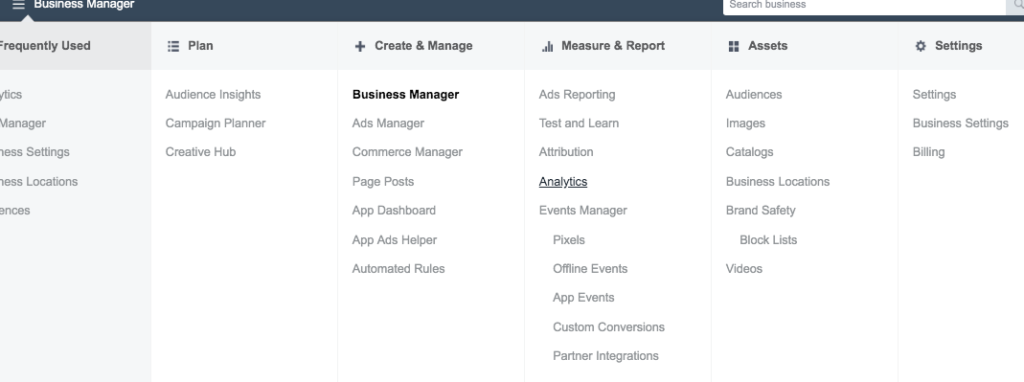
For business owners, Facebook offers the Business Manager dashboard. I recommend you open a business manager account so you can have access to other tools like Analytics.
Facebook Analytics gives you data, not only from the page, but from behavior captured from your Facebook Pixel.
How Facebook Pixel Works
When someone visits your website and takes an action (for example, buying something), the Facebook pixel is triggered and reports this action. This way, you’ll know when a customer took an action after seeing your Facebook ad. You’ll also be able to reach this customer again by using a custom audience. When more and more conversions happen on your website, Facebook gets better at delivering your ads to people who are more likely to take certain actions. This is called conversion optimization.
Metrics Tool #4 : Facebook Page Insights
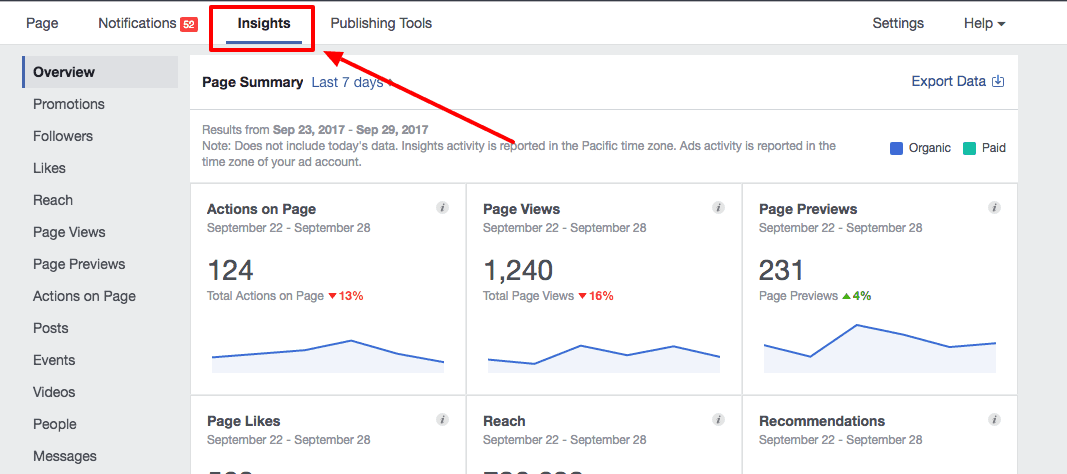
Insights provide information about your Page’s performance, like demographic data about your audience and how people are responding to your posts. Keep in mind that you can only access data in Page Insights for the last 2 years, and demographic data, such as age, gender and location, are available in Page Insights once there is data for 100 or more people. Pages categorized as a Community Page don’t have Insights.
You can use Insights to:
- Understand how people are engaging with your Page.
- View metrics about your Page’s performance.
- Learn which posts have the most engagement and see when your audience is on Facebook.
Keep in mind, you can change the date of the report and even export it. If you manage a Facebook Group, you can also check your insights.
Metrics Tool #5: Visibility Factor
Don’t google this you won’t find this.
I don’t want you to rely just on the numbers to measure how your social media is helping your business. From my personal experience, numbers will ever capture the conversations that happen offline, based on the stories they see online.
Pay attention to the connections you make on social media! Are you getting requests from influencers? Introductions? Referrals? You should! If you’re not seeing these kinds of results, maybe it’s time to work on your visibility factor. It’s not just about the numbers but the influence of your connections. A connection can transform your life and your business!
Metrics Tool #6: Bad Reviews Removal
Objection is a free negative reviews removal tool. They have a test designed to help you decide whether to respond to the review, to try to remove it based on its unique content and reviewer.
In Closing
My amazing friend, this is it! You made it until the end! I’ve shared it all with you. Now it’s your turn to leave me in comments what was your favorite tool!
Do you have favorite tools we should know about? Feel free to share!











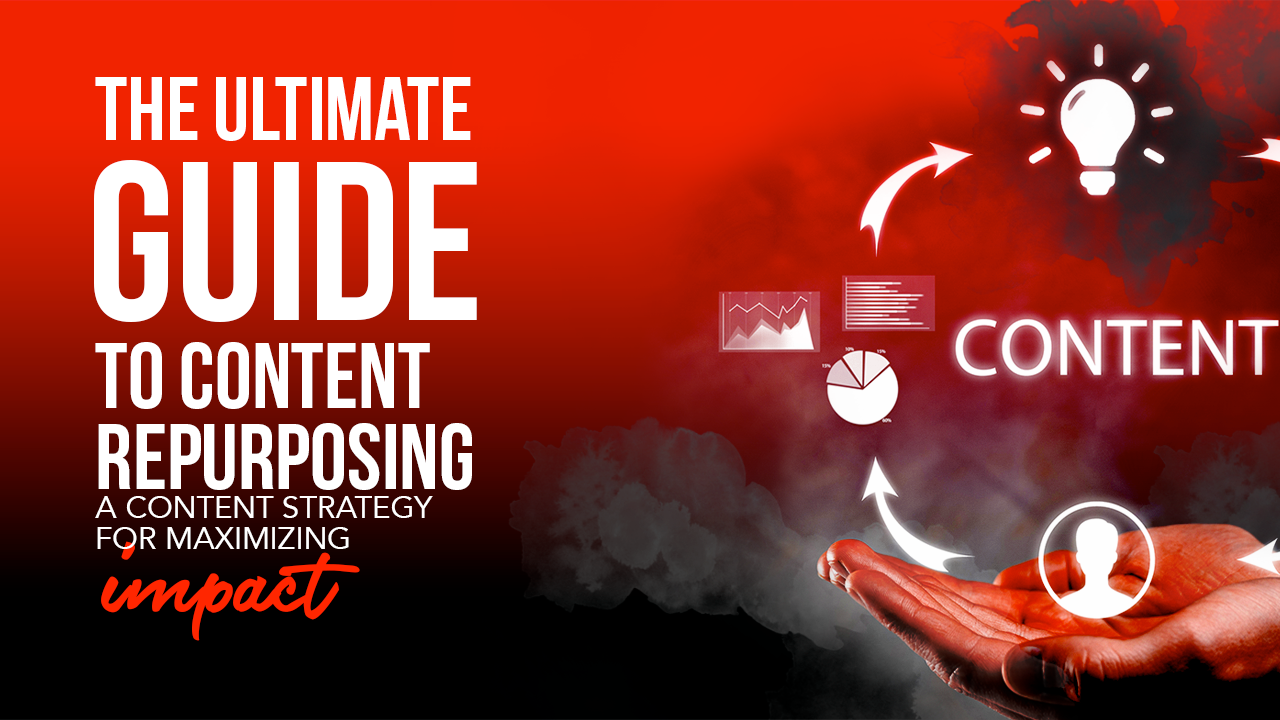
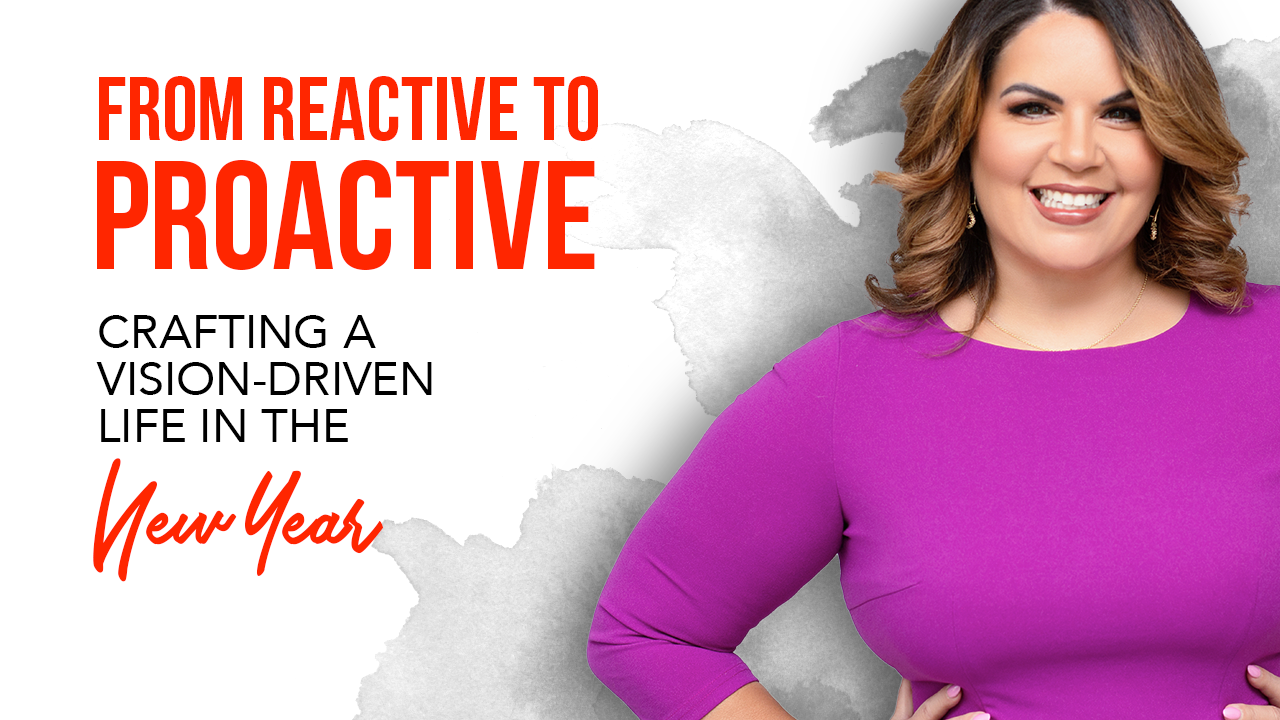
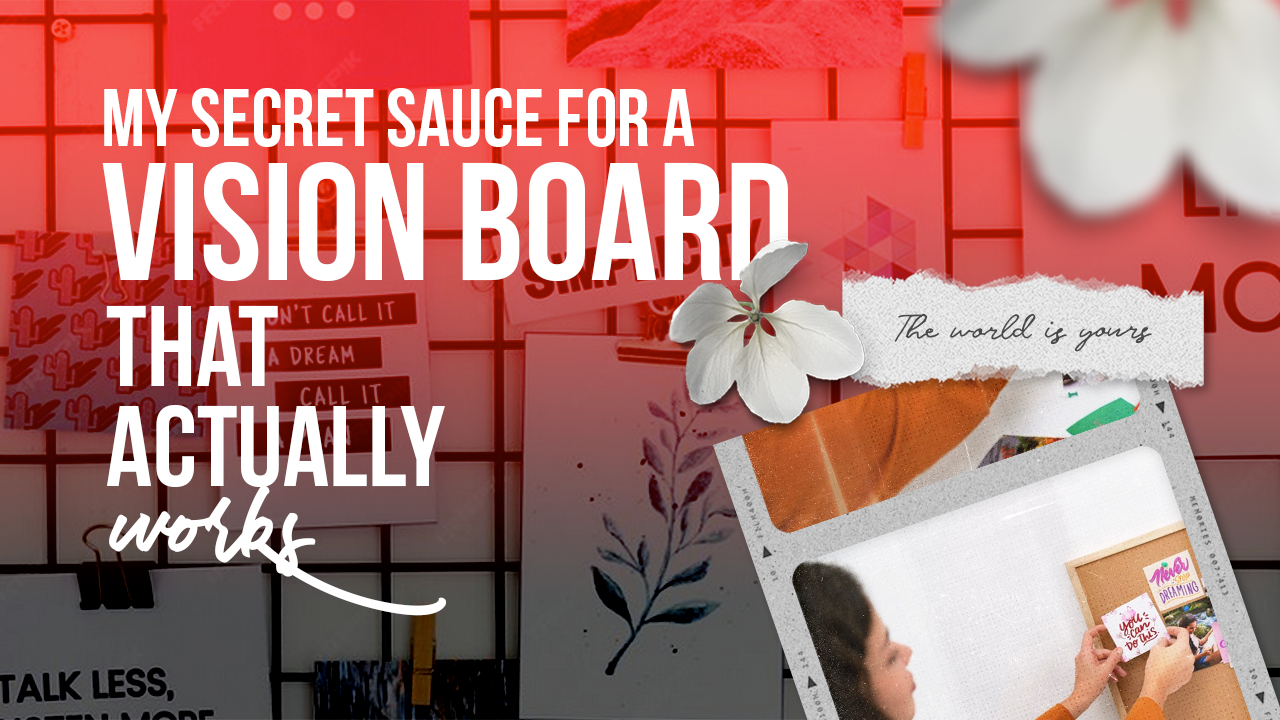

1 Comment
[…] Grab My Ultimate Guide: 27 Best Social Media Marketing Tools […]